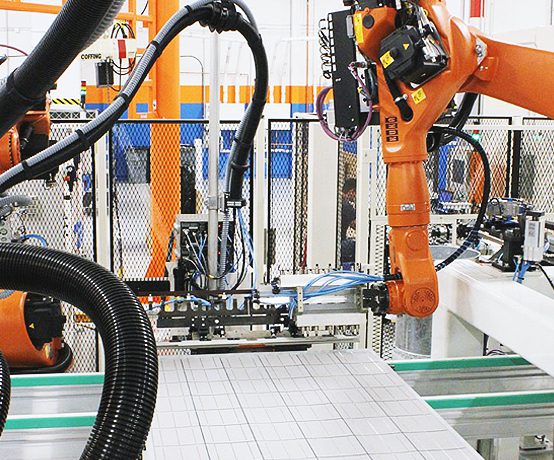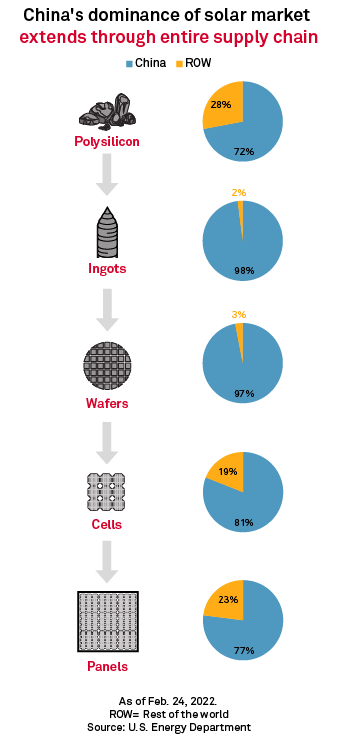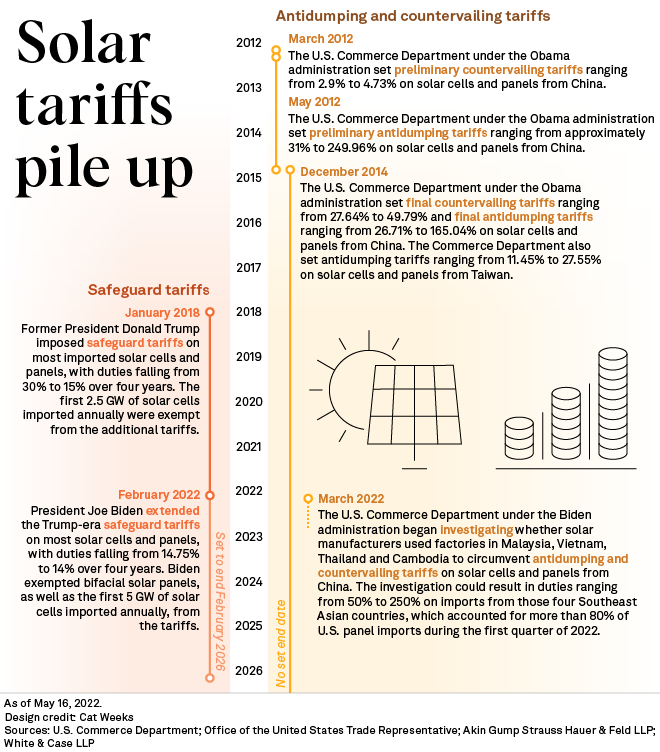
Solar photovoltaics, (PV) were first commercialized in the US in 1954 at Bell Labs and for decades, the US led the research, development and manufacturing of solar. Complacency on the part of the US combined with aggressiveness by China, has resulted in our nation now primarily being a consumer of solar products. This includes solar panels and the raw materials to build them.
The Predicament
In order to reduce carbon emissions in the fight against our Climate Crisis, the US, must pivot away from burning fossil fuels and move toward clean, renewable energy technologies like solar and wind, but being reliant upon imported products leaves the US in a vulnerable position as we’re one of the most energy dependent societies on the globe. For example, what happens if China decides to stop selling solar to the US? With increasingly stronger and more frequent adverse weather events, the urgency for the transition to clean energy is only increasing.
How Did We Get Here?
In the 2000’s the Chinese government anticipated the coming demand for solar and created aggressive financial incentives for companies to build a solar manufacturing industry that could dominate the marketplace, much like OPEC and petroleum. Chinese companies then flooded the global solar marketplace with solar products priced artificially low because they could sell at a loss, yet remain profitable via significant and direct government financial subsidies.
As more and more consumers purchased cheap solar products from China, manufacturers in North America and Europe were unable to compete and stay in business as they weren’t receiving the same kind of direct governmental assistance. One by one, over time, these manufacturers went out of business, further solidifying China’s grip on the rapidly growing solar industry. As shown in the accompanying graphic, China dominates the global solar supply chain for raw materials, polysilicon, ingots, wafers, cells and even the final product, solar panels.
Leveling The Playing Field?
The Obama and Trump administrations both imposed solar tariffs on imported Chinese solar products in an effort to help struggling US solar manufacturers survive in a manipulated marketplace. In turn, Chinese companies developed tariff workarounds like manufacturing in nearby countries (Malaysia, Vietnam, Thailand and Cambodia) while continuing to “dump” products into the US market. There are also some very significant humans rights issues with some of the Chinese factories. The Biden administration is in the unenviable position of trying to hold China accountable for its manipulation of the marketplace and its violation of human rights, while also trying to rapidly advance a clean energy agenda to address our Climate Crisis. The current temporary “solution” is placing a two-year moratorium on enforcing solar tariffs.
Dividing The US Solar Industry
As a result of this cat and mouse tariff “game” with China, US solar installers and solar manufacturers find themselves fighting against each other instead of supporting each other. Solar installers need panels to install but increasingly have fewer equipment options as non-China based manufacturers continue to go out of business. Earlier this year, LG Solar which built a solar panel manufacturing facility in Georgia just a couple of years ago, recently shuttered its doors in part because it recognized that without some long-term help from the US government, they couldn’t compete against China in a global marketplace. US manufacturers want tariffs to level the playing field so they can survive in the long run and installers want no product tariffs to keep prices low so they can survive and install more solar now. Combine the tariffs and global supply chain issues related to the pandemic and you’re left with a somewhat unstable and unpredictable solar marketplace. We’re seeing this in the form of fewer solar panel options to offer our customers and increased material prices.
What’s Next?
It’s hard to predict what twists, turns and dips are in the future. Welcome to the solar coaster! Will the US completely concede solar manufacturing and our energy security to China much in the way we did with OPEC and petroleum? Cheap energy does come with compromises whether it’s carbon emissions or energy security and human rights issues.
It will take a combination of solar tariffs along with direct governmental support of US manufacturers to keep the marketplace fair so we can secure our clean energy future. The US Department of Energy believes US manufacturers need 10-years of direct financial support to level the playing field.
Please contact your elected officials and encourage them to support a US solar manufacturing industry with long-term, direct financial incentives. It’s important for our national security as well as for the health of the planet. We developed solar technology but we’ve also let it slip away and it’s more important than ever to revitalize our entire US solar manufacturing industry. There is no better time than now!


